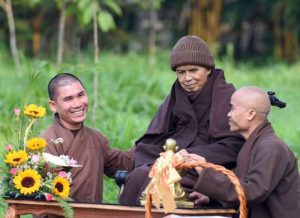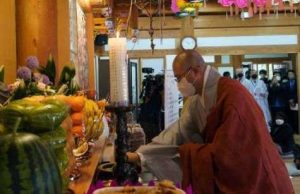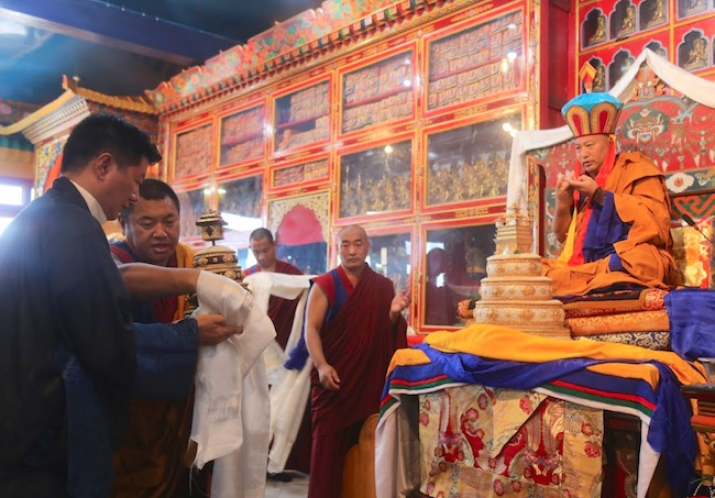
Almost a year after the passing of his predecessor, His Holiness Geshe Dawa Dhargye, the 34th Menri Trizin, was enthroned on 6 September as the new spiritual leader of the Bön tradition. The two-day enthronement ceremony was held at Pal Shenten Menriling Monastery in Dolanji in northern India, and was attended by some of the leading figures of the Tibetan community in exile.
Among the many dignitaries present were Dr. Lobsang Sangay, president of the Central Tibetan Administration—Tibet’s de facto government in exile—who gave a speech and presented the newly enthroned Menri Trizen with a mandala, Khenpo Sonam Tenphel, speaker of the Tibetan Parliament in Exile, and Geshe Monlam Tharchin and Tsewang Tashi Bhara, Bönpo Members of the Tibetan Parliament.
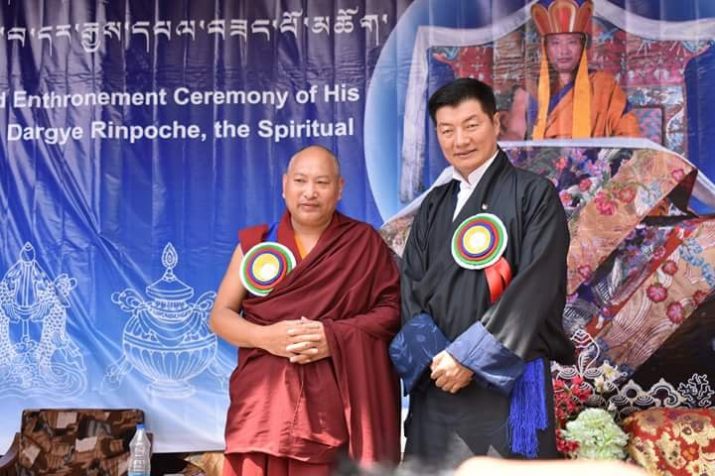
The new Menri Trizin was selected through a process known as Lha Sung Den Terwa (trans. Requesting the Religious Protectors to Reveal the Truth), where names of candidates for the position are selected by the protectors of the Bön tradition.
The Lha Sung Den Terwa started on 19 December 2017, a few months after the passing of the 33rd Menri Trizin, His Holiness Lungtok Tenpai Nyima, on 14 September 2017, and was overseen by Menri Lopön Thrinley Nyima Rinpoche, Triten Norbutse Khenpo Tenpa Yungdrung Rinpoche, and other distinguished Bön Lamas. At the beginning of this year, Ven. Geshe Dawa Dhargye was selected from 60 potential candidates, all residing in exile.
In principle, every Yungdrung Bön geshe is an eligible candidate for the position, but for reasons of practicality only candidates residing outside of Tibet are considered. Geshes can voluntarily withdraw from the Lha Sung Den Terwa by contacting the monastery.
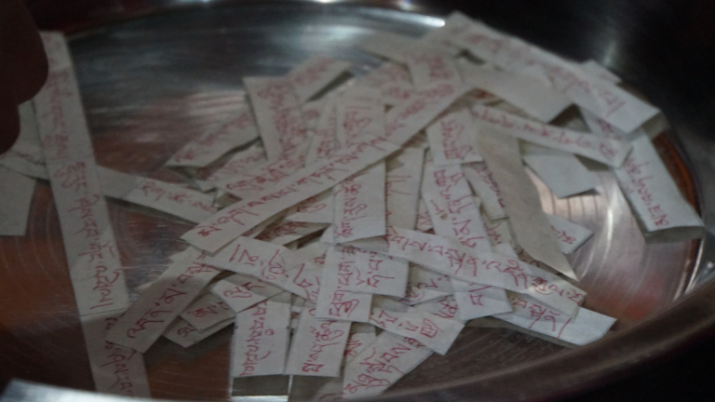
In order to perform the Lha Sung Den Terwa, the names of the candidates are written on small pieces of paper, which are placed in individual balls of tsampa dough that are then dried in the sun. Once dried, the tsampa dough balls are placed in two vases, which are sealed with wax and placed in the monastery’s protector temple.
After eight days of prayers, offerings, and ceremonies, the vases are shaken until each produces a dough ball containing a candidate’s name. The two dough balls are subsequently placed into another vase, and after another five days of prayers, the vase is shaken in front of the sacred image of Lord Tönpa Shenrap Miwoche in the main temple until the dough ball with the name of the new Menri Trizin emerges.
On 1 January 2018, it was Geshe Dawa Dhargye’s name that emerged. Thrinley Nyima Rinpoche shook the vase with the remaining two dough balls, and Geshe Dawa Dhargye, born in Sharkhog in the traditional Amdo region of northeastern Tibet, was announced to be the 34th Menri Trizin.
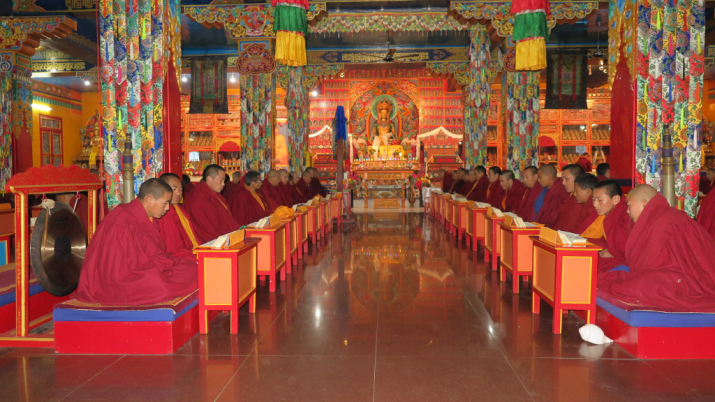
The Bön tradition has its origins in an indigenous religion with shamanic characteristics that pre-dated Buddhism in Tibet. The practices of this early court religion were focused on healing the fate of the soul after death and propitiatory rites for the welfare and prosperity of the living. With the arrival of Buddhism in Tibet in the 8th and 9th centuries, the early traditions lost favor, but periods of religious conflict and competition lead to Bön and Buddhism mutually influencing one another.
Modern day Bön, Yungdrun Bön or Eternal Bön, developed in line with the Buddhist traditions. In addition to Shakyamuni Buddha, contemporary Bön venerates the Buddha Tonpa Shenrab Miwoche as the founder of the school. Although it has similarities with Tibetan Buddhism, it has remained distinct in its identity and is often seen as separate from the schools of Tibetan Buddhism.
Today, there are approximately 264 Bön monasteries, convents, and hermitages in Tibet, and about 10 per cent of Tibetans are said to actively follow the Bön tradition, at least to some extent. Bön also has followers in the West, where practitioners often practice Bön alongside Tibetan Buddhism. Bön has been recognized as the fifth school of Tibetan Buddhism by His Holiness the Dalai Lama.
See more
Tibetans celebrate enthronement of the new head of the Bon religion (Asia News)
New head of Bon tradition officially enthroned (Phayul.com)
Selection of the New 34th Menri Trizin (Nine Ways)
Grand Enthronement of His Holiness 34th Menri Trizen (Nine Ways)








